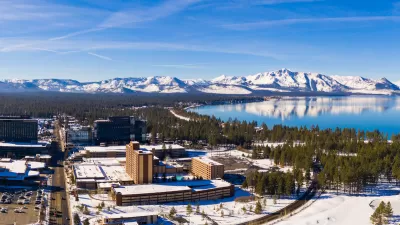A proposal to annually burn tens of millions of car tires to produce electricity at a facility in Erie, Pennsylvania is raising concerns among environmentalists and regional residents over mercury and other emissions.
"Green is not the color most people would associate with burning tires.
But that's how developers of a proposed tire-fueled power plant in hardscrabble Erie, Pa., describe their project. They say the plant, which would turn 900 tons of tires each day into a 90-megawatt power supply, would be an ecologically beneficial investment since it would keep tires out of landfills or illegal dumps and generate electricity with one-tenth the emissions of traditional coal-fired power plants.
If it receives needed state approval, Erie Renewable Energy's project would be the largest power plant in the world burning 'tire-derived fuel,' or TDF."
"Among other things, mercury emissions from the plant would likely exacerbate the contamination of fish in Lake Erie, tightening existing consumption limits. ERE's permit application lists a potential of 3 pounds of mercury emissions per year. The ERE facility's proposed 300-foot smokestack would lessen the emissions impact on the immediate area, but residents and officials of New York, just 13 miles to the east, and Canada have also expressed concern about the plant.
Opponents concerned about health and environmental effects say power generation is just a way to disguise what is really a giant tire incinerator. [As one opponent put it] 'Erie just built a new convention center. How many tourists are going to want to come to the city with the world's largest tire incinerator? It's like something out of The Simpsons.'"
FULL STORY: Burning Tires for Power: Green Energy or Health Hazard?

Alabama: Trump Terminates Settlements for Black Communities Harmed By Raw Sewage
Trump deemed the landmark civil rights agreement “illegal DEI and environmental justice policy.”

Planetizen Federal Action Tracker
A weekly monitor of how Trump’s orders and actions are impacting planners and planning in America.

The 120 Year Old Tiny Home Villages That Sheltered San Francisco’s Earthquake Refugees
More than a century ago, San Francisco mobilized to house thousands of residents displaced by the 1906 earthquake. Could their strategy offer a model for the present?

Opinion: California’s SB 79 Would Improve Housing Affordability and Transit Access
A proposed bill would legalize transit-oriented development statewide.

Record Temperatures Prompt Push for Environmental Justice Bills
Nevada legislators are proposing laws that would mandate heat mitigation measures to protect residents from the impacts of extreme heat.

Downtown Pittsburgh Set to Gain 1,300 New Housing Units
Pittsburgh’s office buildings, many of which date back to the early 20th century, are prime candidates for conversion to housing.
Urban Design for Planners 1: Software Tools
This six-course series explores essential urban design concepts using open source software and equips planners with the tools they need to participate fully in the urban design process.
Planning for Universal Design
Learn the tools for implementing Universal Design in planning regulations.
Clanton & Associates, Inc.
Jessamine County Fiscal Court
Institute for Housing and Urban Development Studies (IHS)
City of Grandview
Harvard GSD Executive Education
Toledo-Lucas County Plan Commissions
Salt Lake City
NYU Wagner Graduate School of Public Service





























